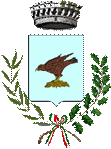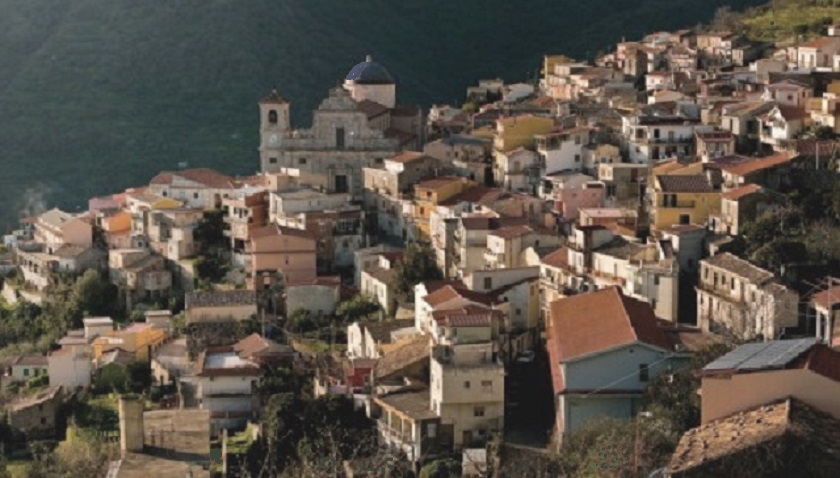

Sorge in collina a 450 mt. s.l.m..
Sulle le sue origini le uniche fonti sono riferibili al Frate cappuccino frà Serafino d’Alì che nel 1754 redasse un manoscritto dal titolo: “Della storia di Alì e suo territorio, ovvero sua fondazione ed origini e quanto in essa si racchiude e si contiene”. Secondo tale scritto, Alì sarebbe stata fondata nel 638 a.C. da greci provenienti da Elide, regione del Peloponneso. In origine il paese era situato su Piano Mollerino, vicino al mare. Successivamente fu spostato su Monte Scuderi ma a causa delle difficoltà di tale allocazione fu trasferito alle pendici di Monte Sant’Elena.
Elis, così era denominata, era sotto la giurisdizione della polis siceliota di Zancle, nell’Arcontato fondato da Dionisio I e i suoi abitanti erano dediti all’agricoltura ma anche allo sfruttamento delle risorse minerarie.
Nel 250 a.C. in seguito alla prima guerra Punica, Elis fu distrutta dai siracusani guidati dal Tiranno di Siracusa, Gerone II.
Altra ipotesi sulle sue origini è quella che vuole Alì fondata dai musulmani e il suo nome derivante da Alì Jbn Abi Talib, genero di Maometto.
Nel 1093 con la concessione di Alì da parte di Ruggero I di Sicilia ai monaci basiliani, compreso il monastero dei Santi Pietro e Paolo di Itala, il suo abate divenne barone di Alì e Itala su cui esercitava mero e mixto imperio, mentre la giurisdizione ecclesiastica spettava all’Archimandrita di Messina.
Nel 1468 Alì fu inclusa nella diocesi archimandritale di Savoca e fino a tutto il XVI sec. prosperò grazie agli sfruttamenti
Durante la rivolta antispagnola degli anni 1674-1678. Alì rimase fedele agli spagnoli e pertanto subì il saccheggio da parte dei messinesi. Venne inclusa nella giurisdizione militare di Savoca ma non tornò alla primitiva grandezza e poiché i rapporti col monastero basiliano non furono mai ottimali, nacque una disputa sulle rendite tra cui quella più aspra fu quella sulla sansa che si dilungò per tutto il XVIII secolo concludendosi solo nel 1799.
Nel 1749 furono rinvenuti sul Piano Mollerino molti resti archeologici.
Nel 1783 il paese subì la devastazione causata da un terremoto dalla quale si risollevò ma, in contemporanea, iniziò un esodo verso la Marina di Alì, che tra il settecento e l’ottocento divenne oggetto d’interesse da parte di viaggiatori soprattutto per le sue fonti termali, attualmente attive.
Nel 1812 con l’abolizione del feudalesimo in Sicilia, la Terra d’Alì divenne Comune d’Alì, fu inserito nel Distretto di Castroreale e capoluogo del Circondario di Alì. Nel 1910, la frazione di Alì Marina si staccò dal capoluogo e divenne Comune di Alì Terme (solo dal 1928 al 1946 furono riunificati in un unico comune).
Spesso per distinguerli si usa in via non ufficiale il termine di Alì Superiore.
Tra la fine dell’ottocento e inizio novecento Alì ha ospitato l’industria del ghiaccio, del gesso e delle cassette per imballaggio.
(English)
It stands on a hill at 450 mt a.s.l. (above sea level).
The only sources on its origins are related to the Capuchin Friar Serafino d’Alì, who in 1754 wrote a manuscript entitled: “ Della storia di Alì e suo territorio, ovvero sua fondazione ed origini e quanto in essa si racchiude e si contiene”. According to the manuscript, Alì was founded in 638 B.C. by Greeks from Elide, a region in the Peloponnese. Originally the village was situated on Piano Mollerino, near the sea. Later it was moved to Mount Scuderi but due to the difficulties of such an allocation it was transferred to the slopes of Mount Sant’Elena.
Elis, as it was called, was under the jurisdiction of the Sicelian polis of Zancle,in the Arcontato founded by Dionysius I and its inhabitants were devoted to agriculture but also to the exploitation of mineral resources.
In 250 B.C., following the First Punic War, Elis was destroyed by the Syracusans led by the Tyrant of Syracuse, Hieron II.
Another hypothesis on its origins is that Alì was founded by Muslims and its name derives from Alì Jbn Abi Talib, Mohammed’s son-in-law.
In 1093 with the concession of Alì by Roger I of Sicily to the Basilian monks, including the monastery of Saints Peter and Paul of Itala, its abbot became baron of Alì and Itala over which he exercised mero and mixto imperio, while the ecclesiastical jurisdiction lay with the Archimandrite of Messina.
In 1468 Alì was included in the Archimandrite Diocese of Savoca and until the end of the 16th century it prospered thanks to the exploitation of the land.
During the anti-Spanish revolt of 1674-1678, Alì remained loyal to the Spaniards and was therefore sacked by the Messina people. It was included in the military jurisdiction of Savoca, but it did not return to its original greatness and since relations with the Basilian monastery were never optimal, a dispute arose over the revenues, the most bitter of which was the one over the pomace, which lasted throughout the 18th century and was only concluded in 1799.
In 1749, many archaeological remains were discovered on the Piano Mollerino.
In 1783 the town suffered the devastation caused by an earthquake from which it recovered but, at the same time, an exodus towards the Marina of Alì began. Between the XVIII and the XIX centuries it became the object of interest of travelers especially for its thermal springs, now active.
In 1812 with the abolition of feudalism in Sicily, the Land of Alì became a Municipality of Alì, was included the District of Castroreale and was the chief town of the District of Alì. In 1910, the hamlet of Alì Marina detached from the chief town and became Municipality of Alì Terme (only from 1928 to 1946 they were united in a single municipality).
Often to distinguish them the term of Alì Superiore is used unofficially.
Between the end of the 19th century and the beginning of the 20th century Alì hosted the ice, plaster and packing-box industry.